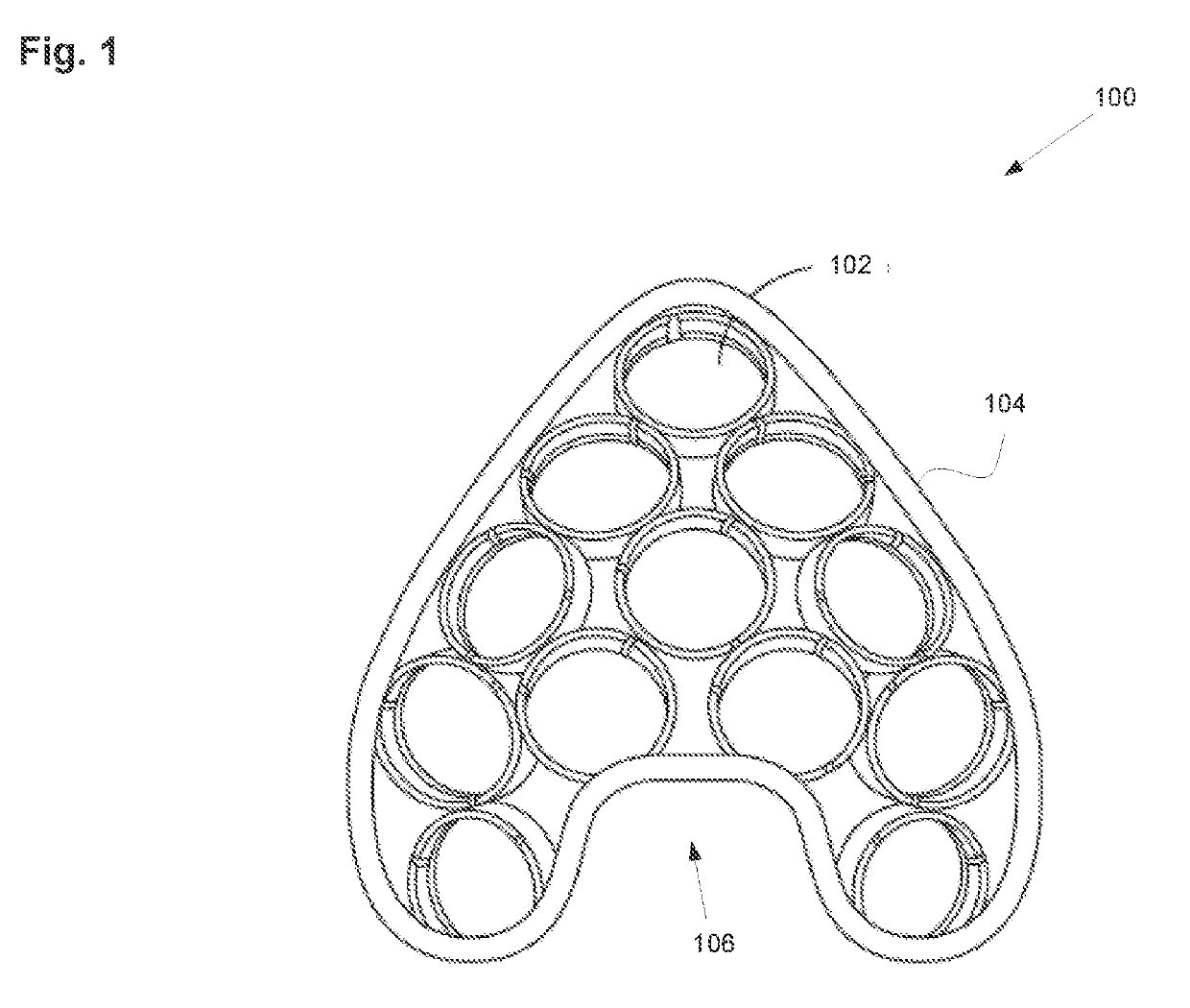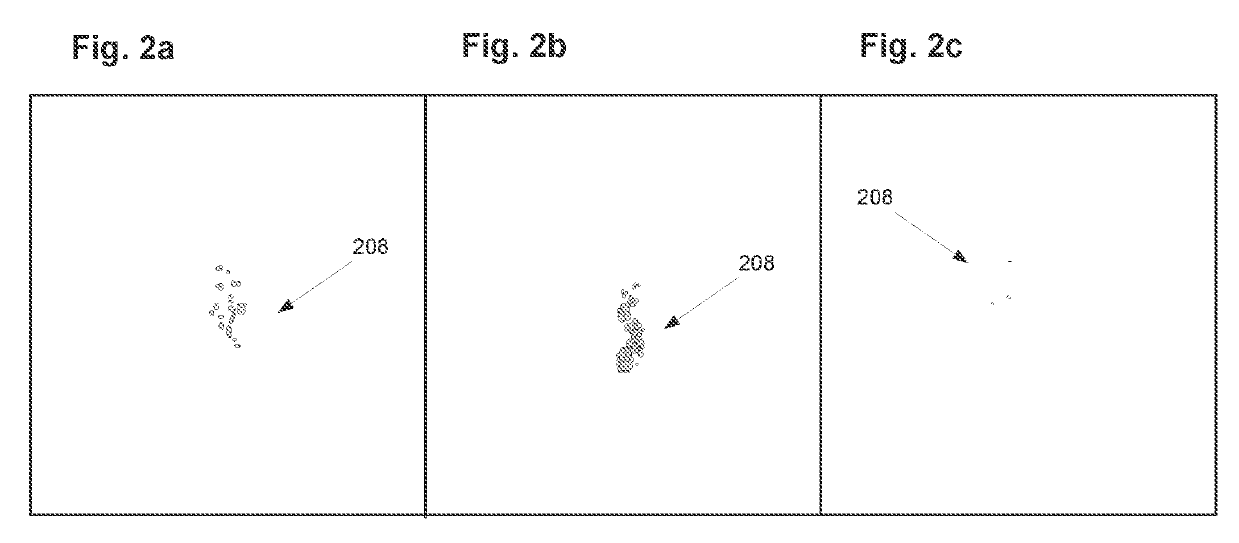Histotripsy excitation sequences optimized for bubble cloud formation using shock scattering
a technology of excitation sequence and bubble cloud, which is applied in the field of histotripsy excitation sequence optimized for bubble cloud formation using shock scattering, can solve the problems of reducing the effective transducer aperture, reducing the efficiency of histotripsy therapy transducers, and low efficiency of transducers with low f-numbers, so as to enhance histotripsy homogenization of soft tissues and improve efficiency. , the effect of high f numbers
- Summary
- Abstract
- Description
- Claims
- Application Information
AI Technical Summary
Benefits of technology
Problems solved by technology
Method used
Image
Examples
Embodiment Construction
Generation of Cavitation
[0042]Several principles of cavitation nuclei and bubble cloud formation that provide important background information for the development of the preferred embodiment are disclosed herein. Cavitation nuclei are individual bubbles formed as a result of the delivery of low pressure to tissue. Bubble clouds can comprise of dense clusters of cavitation nuclei that form at or near the transducer focus. The formation of cavitation nuclei (bubble clouds) are both key components of Histotripsy therapy.
[0043]Probability for Forming Cavitation Nuclei
[0044]Cavitation nuclei can be formed in tissue if the tissue is subjected to a peak negative (peak rarefaction) pressure approaching or exceeding the pressure level needed to create at least a single cavitation nucleus (bubble). Note that this level is variable and is dependent upon multiple factors including tissue properties (structure and composition, dissolved gas content, and existence of impurities), transducer geome...
PUM
 Login to View More
Login to View More Abstract
Description
Claims
Application Information
 Login to View More
Login to View More - R&D
- Intellectual Property
- Life Sciences
- Materials
- Tech Scout
- Unparalleled Data Quality
- Higher Quality Content
- 60% Fewer Hallucinations
Browse by: Latest US Patents, China's latest patents, Technical Efficacy Thesaurus, Application Domain, Technology Topic, Popular Technical Reports.
© 2025 PatSnap. All rights reserved.Legal|Privacy policy|Modern Slavery Act Transparency Statement|Sitemap|About US| Contact US: help@patsnap.com



